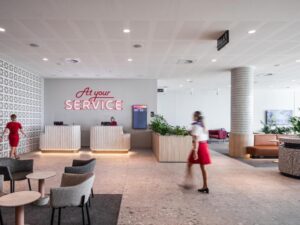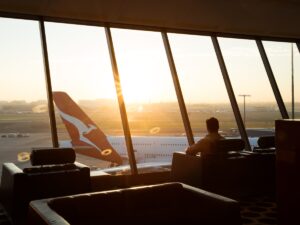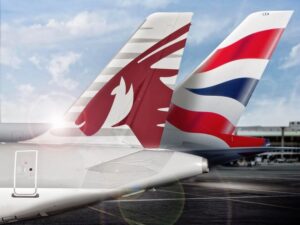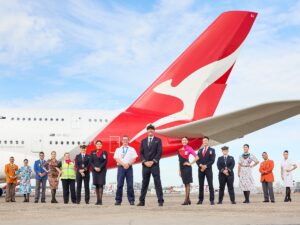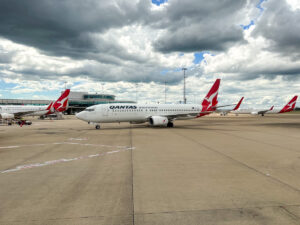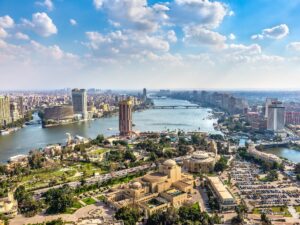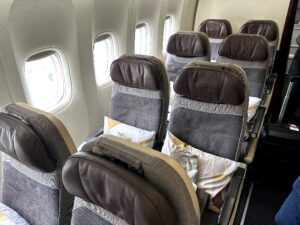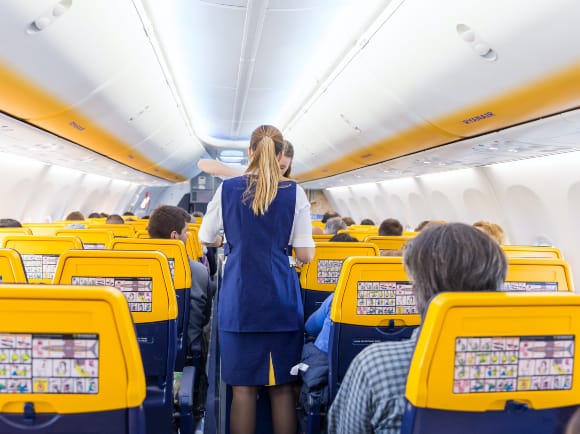
It’s easy to forget just how good flying is in Australia. We have two full-service airlines with proper Business class products and well-appointed airport lounges. Complementing this are two low-cost airlines offering comfortable budget travel. By comparison, aviation in Europe is in a rather sad state…
Flying in Europe really seems like a cross between Tigerair and a horse and cart! From what I can see even business class use the exact same seats as economy, and the food in business class seems like garbage?
There is simply no comparison between domestic Business class on Qantas or Virgin Australia and intra-Europe Business class. On almost all short-haul flights within Europe, Business class uses Economy seats with a blocked middle seat. This is economical for the airline as it allows them to alter the number of Business seats on each flight according to demand. But the seat itself is no different to Economy, and the legroom is no better either.
The Euro-business soft product is an improvement over Economy, but not by much. Complimentary meals and drinks are offered on most airlines, but the quality varies. Business class passengers can at least access airport lounges – but most European lounges are nothing special. All in all, Euro-Business is rarely worth the extra cost.
Business Class intra-Europe looks weak but that’s just because they use seats that can be converted from business to economy (they slide the divider). It’s a very clever system actually. They are three seats in economy, and so in ‘J’ you get an empty middle and a pop-out armrest. It’s worse than VA domestic J, but still an upgrade over economy, although I’m not particularly tall or wide. Whether it is worth the price is another story…
Business class within Europe may be poor, but Economy is even worse. Sadly, intense competition from low-cost carriers has started a race to the bottom among full-service airlines. For example, British Airways recently removed complimentary food & drinks from its short-haul Economy flights and now charges extra for checked baggage. British Airways is also in the process of reducing legroom on some aircraft.
Holding airline status can remove some of the hassle of flying. But Qantas or Virgin Australia status is not particularly helpful. Qantas’ Oneworld partners in Europe – British Airways, Iberia and Finnair – have hubs on the outskirts of the continent. And Virgin’s only European partner, Alitalia, is currently facing bankruptcy. Star Alliance does, however, enjoy a strong European presence.
Low-cost carriers have changed the face of aviation in Europe. They have made air travel more affordable, which in itself is a very good thing. But when it comes to European low-cost carriers, airlines like Ryanair genuinely make Jetstar and Tigerair look good. Ryanair may offer cheap airfares, but this comes at a price. Ryanair charges extra for everything from luggage to checking in at the airport. The airline has also attracted criticism for its treatment of staff. For example, it charges its own pilots for food and drinks (including water) when on duty.
Aviation in Europe is in such a poor state that it’s often better to catch the train. High-speed trains in Europe are fast, frequent, reliable and comfortable. They also arrive right in the centre of the city, unlike some Ryanair flights that land several hours away. Seat 61 is a good resource for researching train travel around Europe.
Honestly though I’d be inclined to stick to trains as much as possible unless you’re really desperate for the SC from flying Alitalia. European trains are generally pretty good, and you can often get first/business class for only slightly more than standard. If you need to fly I’d recommend EasyJet – usually reasonably cheap, not too much difference between them and Y in legacy carriers any more, and they will generally fly you to the city that they say they will
Join the discussion on the Australian Frequent Flyer forum: Flying in Europe
